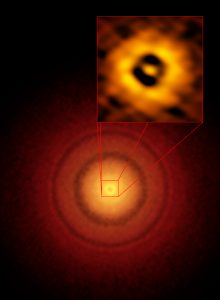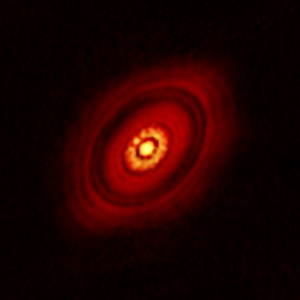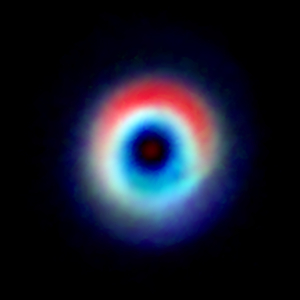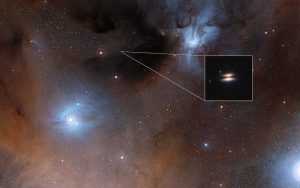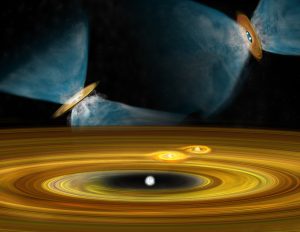ALMA uncovers planet formation at 1 AU around young star.
VLA Shows Earliest Stages of Planet Formation
New images of a young star made with the Karl G. Jansky Very Large Array (VLA) reveal what scientists think may be the very earliest stages in the formation of planets.
Planet Formation around Binary Star
ALMA sees signs of planet formation around binary star.
The Frigid Flying Saucer
ALMA finds unexpectedly cold grains in planet-forming disk
VLA Reveals Dramatic New Evidence About Star and Planet Formation
A detailed study of young stars and their surroundings has produced dramatic new evidence about how multiple-star systems form and how the dusty disks that are the raw material for planets grow around young stars.
Giant Planets Carving Paths around Four Young Stars, ALMA Observations Suggest
ALMA observations find compelling evidence of planets in formation.






